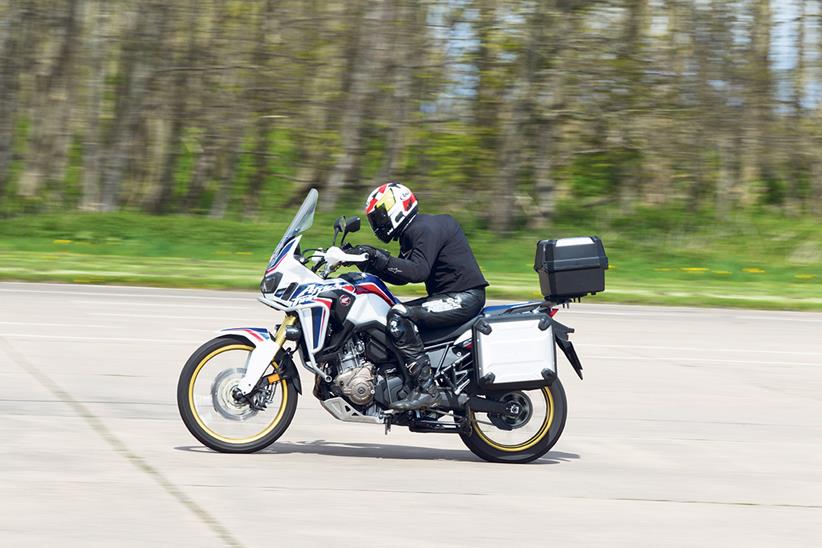MCN Fleet: Is 93bhp for Honda's Africa Twin enough?
Honda claim 93.8bhp from their new 998cc flagship Africa Twin. Compared to its 1200cc, 150bhp-plus adventure bike rivals it’s clearly down on capacity and power, so we wanted to find out if the Africa Twin really has enough grunt in the real world of fully-loaded and two-up riding
After 2500 miles of life with the Africa Twin the overwhelming majority of my riding has been solo, with just a topbox containing a 5kg laptop bag. In this guise the Africa Twin has totally acceptable levels of power. It’s an engaging ride, accelerates well and feels very comfortable at higher motorway speeds. But it certainly doesn’t have a glut of power.
To test how the extra weight of luggage and a pillion affects the Africa Twin I went to Bruntingthorpe Proving Ground, where I met MCN’s datalogging technician Bruce Dunn. To get a tangible indication of power and acceleration we conducted a fourth gear roll-on test. This meant accelerating from 35mph until the bike hit the rev limiter, staying in fourth gear all the way. The clocks indicated 120mph, but the datalogger said it was a real 109mph. We then reduced the range to produce data for a true 40mph to 100mph acceleration test, again in fourth gear.
Fully kitted I weigh in at 82kg (12st 12lb) so, without any luggage, I took to Bruntingthorpe’s two-mile runway for the first of my three tests. Cracking the throttle and holding it to the stop, the bike began accelerating slowly before hitting a swathe of power at 4500rpm and, helped by a strong tailwind, accelerated strongly all the way to the limiter. It recorded a respectable time of 8.417 seconds, taking 273 metres to get from 40mph to 100mph.
Next up I fitted the panniers, which contained a selection of barbell weights. Including the weight of my bag and the panniers themselves this added a total of 50kg (7st 12lb).
The difference in performance was tangible. Gone was the urgency of acceleration compared to when I was riding solo. The bike gathered speed at a noticeably more sedate rate. This feeling was backed up in the data with the identical 40-100mph test taking 10.34s and 336m – 1.923s and 63m longer than riding without luggage.
Next up we kept the 50kg of luggage and Bruce jumped aboard the pillion seat. Fully kitted, Bruce weighs 75kg (11st 11lb) so we now had 207kg (32st 8lb) of extra weight. Added to Honda’s claimed 232kg weight of the bike, we now had a grand total of 439kg.
With a pillion onboard the fully-loaded Africa Twin felt lethargic. Accelerating from 40mph, it didn’t take either of us by surprise as it climbed to 100mph. The sedate feeling was once again backed up by the data with the 40-100mph test taking a significant 12.38s and 397m. A massive 3.963s slower than when riding solo and 2.04s slower than the luggage-only time.
Before conducting the test I expected the weight to have a noticeable effect, but I didn’t think it would be this marked. Given the linear power and torque curve of the parallel twin motor I expected the Africa Twin to deal with the weight a little better. In reality, the Africa Twin is still capable of two-up, fully loaded touring, but it’s fair to say that it’s approaching the limits of the package.
Looking to buy your own bike? Visit MCNbikesforsale.com


